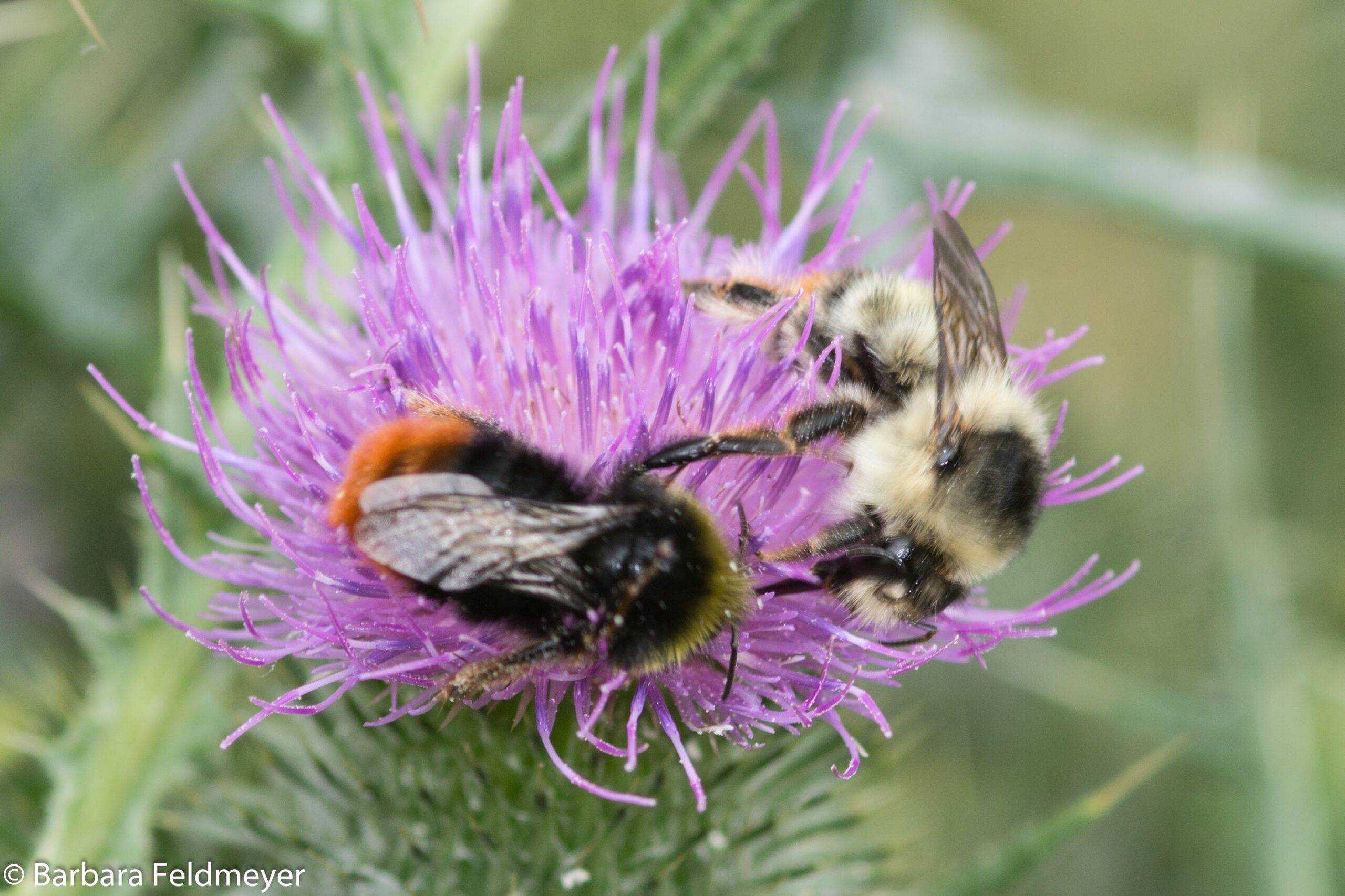Have you ever watched a bumblebee collecting nectar from flowers? At first sight, this does not seem like a very difficult task, requiring sophisticated cognitive skills.
However, bumblebees have an amazing ability to learn. Not only where to find the nectar, but also how to perform human-designed tricks that require behaviours not needed in nature. For example, bumblebees have learned to pull strings, pull caps aside, and rotate disks to get to a reward.
Not so long ago, scientists (and bumblebees) have taken it a step further. The scientists, in various ways, demonstrated to their subjects that moving a ball into a target (a circle drawn on the experimental platform) led to a reward. The bumblebees quickly learned to do so themselves, and even improved their tactic to be more efficient than those demonstrated.
Teachers
First, the researchers trained the bumblebees to move a wooden ball, larger than them, to a target – the demonstrator was an artificial insect (on a stick held by the experimenter) pushing the ball. The bumblebees quickly got the idea, but preferred pulling the ball while moving backwards over pushing it. These bumblebees were the demonstrators in the next phase.
Students
In the main experiment, new, untrained bumblebees were divided into three groups. Each insect in the first group could watch another bumblebee dragging one of three available balls to a target and they both received a reward – a drop of sugar water. Insects in the second group saw a ball that moved “by itself” to the target (with help of a researcher-directed magnet under the platform). When the ball reached its destination, the watcher would get a reward. Insects in the third group simply found the ball already at the target with the reward next to it. Each demonstration/trial was conducted only three times.
Then the bumblebees were tested without further demonstration and only got a reward if they brought the ball to the target themselves. Virtually all bumblebees that had had a live demonstrator successfully dragged the ball to the target and did so faster than the other two groups. Those that had seen the ball moving by itself completed about 8 out of 10 trials. Finally, those bumblebees that had simply found the ball next to the reward were successful on average in only 3 or 4 of 10 trials and took the longest.
The student has become the master
Interestingly, the bumblebees did not simply copy what they observed early on. The bumblebee-demonstrator and magnet-using scientist always moved the farthest ball to the target. The student bumblebees usually moved the one closest to the target, even if it had a different colour than the one in the demonstration. And it was not a result of closest ball being pushed accidentally to the target, because the bumblebees usually dragged the ball actually being in-between the ball and the target.
To sum up: firstly, the bumblebees quickly learned a new task requiring the use of a tool (ball) and behaviour that has little to do with normal bumblebee foraging. And secondly, they did not blindly copy a previously observed behaviour, but used a more efficient method – moving the ball closest to the target.
Such unusual experiments show how great a capacity for learning and flexibility in problem solving these common insects have.

